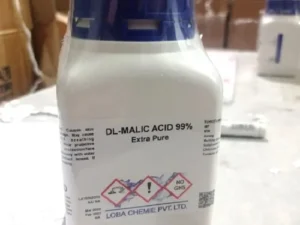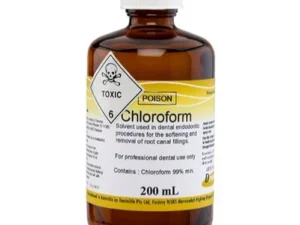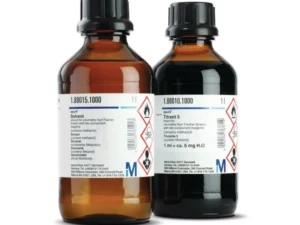Description
Trimethylamine: More Than Just a Fishy Smell
Trimethylamine (TMA) is an organic compound with a pungent, fishy odor that tends to be more noticeable as concentration increases. While primarily recognized for its role in the characteristic smell of rotting fish and bad breath, TMA is a fascinating molecule involved in a variety of biological processes and industrial applications. This article delves into the nature of trimethylamine, exploring its sources, impacts, and potential uses.
What is Trimethylamine?
TMA is a tertiary amine with the chemical formula N(CH₃)₃. This means that a nitrogen atom is bonded to three methyl groups (CH₃). At room temperature, it exists as a colorless volatile gas and is readily soluble in water. Its basic nature allows it to form salts when reacted with acids.
Sources of Trimethylamine:
TMA is generated primarily through bacterial action on certain compounds, most notably choline, carnitine, and betaine. These compounds are abundant in various food sources, especially seafood. Here’s a breakdown of the key sources:
- Seafood: Marine fish and shellfish contain significant amounts of TMA precursors. As these creatures decompose, bacteria convert these precursors to TMA, resulting in the familiar “fishy” odor.
- Human Gut Microbiome: The gut microbiome plays a significant role in TMA production. Some bacteria in the gut can metabolize choline and carnitine from foods like red meat and eggs, leading to TMA formation.
- Trimethylaminuria (TMAU): This is a genetic disorder, often referred to as “fish odor syndrome,” where the body lacks the enzyme (flavin-containing monooxygenase 3, or FMO3) needed to break down TMA. This results in an accumulation of TMA in the body, leading to its excretion through sweat, urine, and breath, causing a persistent fishy odor.
- Industrial Processes: TMA is also produced industrially for various applications.
Impacts and Considerations:
The presence of TMA can have several impacts, both positive and negative:
- Odor Nuisance: The most obvious impact is the unpleasant odor. This can be a significant concern in food processing plants, wastewater treatment facilities, and, of course, in individuals with TMAU.
- Indicator of Spoilage: The presence of TMA is often used as an indicator of seafood spoilage. Higher levels of TMA indicate a greater degree of bacterial decomposition.
- Cardiovascular Health: Recent research has highlighted a potential link between gut microbiome-derived TMA and cardiovascular disease. TMA is metabolized in the liver to trimethylamine N-oxide (TMAO), which has been implicated in the development of atherosclerosis. The exact mechanisms and implications are still being investigated, but this connection has spurred significant interest in dietary interventions to modulate gut microbiome composition and TMA production.
- TMAU and Social Impact: Trimethylaminuria can have a profound impact on an individual’s psychological and social well-being. The persistent odor can lead to social isolation, anxiety, and depression.
Applications of Trimethylamine:
Despite its pungent odor, TMA has found use in several industrial applications:
- Organic Synthesis: TMA is a valuable building block in the synthesis of various organic compounds, including pharmaceuticals, agrochemicals, and quaternary ammonium compounds.
- Quaternary Ammonium Compounds: TMA is a precursor for the production of quaternary ammonium compounds, which are used in surfactants, disinfectants, and textile processing.
- Polymer Chemistry: TMA is used as a catalyst in some polymerization reactions.
- Laboratory Research: TMA is used as a reagent in chemical research and analysis.
Conclusion:
Trimethylamine is a fascinating compound with a significant impact on various aspects of our lives. From its role in food spoilage to its potential link to cardiovascular health and its diverse industrial applications, TMA is far more than just a fishy smell. Ongoing research continues to unravel the complexities of TMA metabolism and its interactions with the human body, paving the way for potential interventions to manage TMA levels and mitigate its unwanted effects. Understanding TMA’s sources, impacts, and applications is crucial for addressing challenges related to odor control, food safety, and human health.














Reviews
There are no reviews yet.